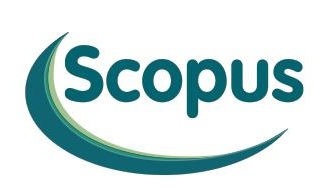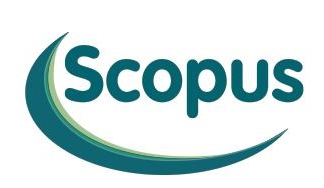Analysis of the results of a computational experiment to restore the discontinuous functions of two variables using projections. I / Lytvyn, / Lytvyn. (2021)

web address of the page http://jnas.nbuv.gov.ua/article/UJRN-0001268751
Cybernetics and Systems Analysis   А А - 2019 /  Issue (2021, Т. 57, № 5) Issue (2021, Т. 57, № 5)
Литвин О. М., Литвин О. Г.
Аналіз результатів обчислювального експерименту відновлення розривних функцій двох змінних за допомогою проєкцій. І Виконано подальше вдосконалення методу відновлення розривних функцій двох змінних за допомогою проекцій для підвищення точності наближення без явища Гіббса. Запропоновано будувати розривний сплайн у такий спосіб, щоб різниця між наближуваною функцією і цим сплайном була диференційовною функцією. Цю функцію відновлюють за допомогою скінченних сум Фур'є, коефіцієнти Фур'є в яких знаходять за допомогою проекцій. Запропоновано метод обчислення цих коефіцієнтів. Виконано обчислювальний експеримент за припущення, що наближувана функція має розриви першого роду на заданій системі вкладених один в одний кругів або еліпсів. Аналіз результатів обчислень підтвердив їхню відповідність теоретичним твердженням роботи. Запропонований метод надає змогу отримувати задану точність наближення за меншої кількості проекцій, тобто за меншого опромінювання. Наведено основні твердження методу наближення розривних функцій двох змінних, що описують зображення поверхні 2D тіла або зображення внутрішньої структури 3D тіла в деякій площині, за допомогою проекцій, які надходять з комп'ютерного томографа. Метод базується на використанні спеціально сконструйованих розривних сплайнів двох змінних і скінченних сум Фур'є, коефіцієнти Фур'є у яких знаходяться за допомогою проекційних даних. Різниця між наближуваною функцією і зазначеним розривним сплайном є неперервною функцією і може наближуватися скінченними сумами Фур'є без явища Гіббса. Згідно з експериментальними даними наближувана функція матиме розриви першого роду на заданій системі вкладених один в одного кругів та еліпсів. Аналіз результатів обчислень підтвердив теоретичні твердження роботи. Запропонований метод надає змогу отримувати задану точність наближення за меншою кількістю проекцій, тобто за меншим опромінюванням. Наведено основні твердження методу наближення розривних функцій двох змінних, що описують зображення поверхні 2D тіла або зображення внутрішньої структури 3D тіла в деякій площині, за допомогою проекцій, які поступають з комп'ютерного томографа. Метод оснований на використанні розривних сплайнів двох змінних і скінченних сум Фур'є, коефіцієнти Фур'є у яких знаходяться з допомогою проекційних даних. В основі методу лежить наступна ідея: наближувана розривна функція замінюються сумою двох функцій - розривного сплайну та неперервної або диференційовної функції. Запропоновано метод побудови сплайн-функції, яка має на вказаних лініях такі ж розриви першого роду, як і наближувана розривна функція та метод знаходження коефіцієнтів Фур'є вказаної неперервної або диференційовної функції. Тобто різниця між наближуваною функцією і вказаним розривним сплайном є функцією, яка може наближуватися скінченними сумами Фур'є без явища Гіббcа. В обчислюваному експерименті вважалось, що наближувана функція має розриви першого роду на заданій системі вкладених один в одного кругів та еліпсів. Аналіз результатів обчислень показав відповідність їх теоретичним твердженням роботи. Запропонований метод дозволяє отримувати задану точність наближення при меншій кількості проекцій, тобто при меншому опромінюванні. Продовжено серію публікацій авторів під однойменною назвою. Вона присвячена подальшому вдосконаленню методу відновлення розривних функцій двох змінних за допомогою проєкцій для підвищення точності наближення без явища Гіббса у разі, коли лінії розриву є системою границь квадратів, вкладених один в одний. Розглянуто випадок, коли лінії розриву мають кутові точки, в яких похідна за нормаллю є невизначеною. Розривний сплайн побудовано так, щоб різниця між наближуваною функцією і цим сплайном була неперервною або диференційовною функцією. Цю функцію наближують за допомогою скінченних сум Фур'є, коефіцієнти Фур'є в яких визначають з використанням проєкцій. Аналіз результатів обчислювального експерименту показав їхню відповідність теоретичним твердженням роботи.
 https://doi.org/10.1007/s10559-021-00400-7 https://doi.org/10.1007/s10559-021-00400-7
 Scopus Scopus
Бібліографічний опис:
Литвин О. М., Литвин О. Г. Аналіз результатів обчислювального експерименту відновлення розривних функцій двох змінних за допомогою проєкцій. І. Кібернетика та системний аналіз. 2021. Т. 57, № 5. С. 98–107. doi: https://doi.org/10.1007/s10559-021-00400-7 URL: http://jnas.nbuv.gov.ua/article/UJRN-0001268751 |  Cybernetics and Systems Analysis / Cybernetics and Systems Analysis /  Issue (2021, 57 (5)) Issue (2021, 57 (5))
Lytvyn O.M.,
Lytvyn O.G.
Analysis of the results of a computational experiment to restore the discontinuous functions of two variables using projections. I The authors provide the main statements of the method of approximation of discontinuous functions of two variables that describe an image of the surface of a 2D body or an image of the internal structure of a 3D body in a certain plane, using the projections from a computer tomograph. The method is based on specially designed discontinuous two-variable splines and finite Fourier sums whose Fourier coefficients can be found using the projection data. The difference between the function being approximated and the specified discontinuous spline is a continuous function and can be approximated by finite Fourier sums without the Gibbs phenomenon. In the computing experiment, it was assumed that the approximated function has discontinuities of the first kind on a given system of circles and ellipses nested into each other. Analysis of the calculation results confirmed the theoretical statements of the study. The method makes it possible to obtain a prescribed approximation accuracy with a smaller number of projections, i.e, with less irradiation. © 2021, Springer Science+Business Media, LLC, part of Springer Nature. Keywords: computed tomography, discontinuous function, discontinuous spline, Fourier sum, Fourier analysis, Fourier transforms, Computer tomographs, Computing Experiments, Continuous functions, Discontinuous functions, Discontinuous spline, Fourier, Fourier sum, Gibbs phenomena, Internal structure, Projection data, Computerized tomography
Cite:
Lytvyn O.M.,
Lytvyn O.G.
(2021). Analysis of the results of a computational experiment to restore the discontinuous functions of two variables using projections. I. Cybernetics and Systems Analysis, 57 (5), 98–107. doi: https://doi.org/10.1007/s10559-021-00400-7 http://jnas.nbuv.gov.ua/article/UJRN-0001268751 [In Ukrainian]. |
|
|